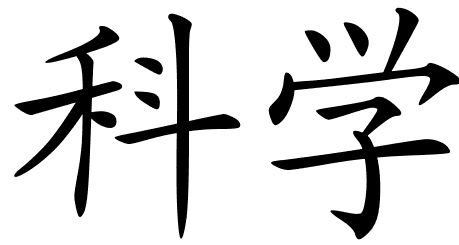Three alternative ways to assign credit for bioscience authors working in collaboratives.
By Drea Burbank MD, consultant specializing in disruptive medical technology
Science is changing. Trends such as authorship reform and increasing numbers of multidisciplinary studies indicate that scientific authorship may need to evolve. Three alternative authorship structures that could gain traction in future include co-first authors, group authorship, and contributor/guarantor lists.
In this article, we examine current trends impacting scientific authorship, advanced authorship metrics, and their respective pros and cons.
TRENDS IN AUTHORSHIP
The biomedical sciences are changing. As previously discussed, several changes in science that have impacted the practice of scientific authorship. These trends are affecting authorship now, and are likely to persist — even increase — in future.
- Authorship reform: The biomedical sciences are experiencing a reproducibility crisis; one contributor is systemic authorship bias (missing authors, ghost authors, and honorary authors) (1, 2). Calls for authorship reform have included suggestions to revise the incentive structure of biomedical research (3, 4).
- Complexity in clinical research: The infrastructure of biomedical research is becoming more elaborate. For instance, as chronic disease becomes a more prominent health concern than infectious disease, large-scale clinical trials have become more complex and longitudinal (5). Now clinical research requires larger author groups and collaborators who might be undercredited in traditional models — for instance, senior authors who obtained large grants, professional medical writers, or full-time clinical-trial coordinators.
- Women in STEM: As more women enter the fields of science, technology, engineering and mathematics (STEM) we may see an increase in collaborative work. Research shows that women are more likely to promote egalitarian, collaborative projects and be motivated to share credit for achievements (6).
- Work-life balance: Like other industries science has generational changes in the workforce, particularly when it comes to attitudes toward work-life balance and child-rearing. Millennial mothers and fathers are equally motivated to take time off for child-rearing, which means research workflow may be more distributed in future (7).
- Multidisciplinary Science: There is a general trend toward increasing multidisciplinary work in modern biomedical research. Cross-disciplinary collaborative projects may require dual expertise for execution.
The traditional authorship metrics of one first-author, one principal investigator, and a limited number of co-authors may be out-of-date.
ADVANCED AUTHORSHIP METRICS FOR THE FUTURE:
In the past, scientific credit has been competitive — and this attitude has equated to professionalism (8). However, the world is changing and with it our ideas of success and credit.
Scientific authorship has two functions: credit authors for their work and document responsibility for its authenticity. There are alternative options to meet these two authorship needs, and still answer to the integrity of research results.
For those interested in more collaborative ways of acknowledging scientific contribution there are three methods which may hold promise: co-first authorship, group authorship, and contributor/guarantor lists.
CO-FIRST AUTHORSHIP is the practice of sharing first-author credit with an asterisk.
J Smith*, M Brown*, P Huang, P Petrovic, S Zhang
When used, the asterisk denotes equal contribution to a research paper by two first-authors. This practice is hotly contested, and many journals do not allow co-first authorship designations.
One critique of co-first authorship is that each author is contributing only 50% that of their peers in the same journal, yet receiving full credit. Another objection is that the authors are still listed sequentially, and so there is still a bias in the interpretation of the contribution.
However co-first authorship may achieve more widespread use in future because it allows for full acknowledgement in interrupted research (such as when a first-author takes maternity leave) and higher-quality research (synergistic combination of papers from two multidisciplinary contributors).
GROUP AUTHORSHIP is the practice of attributing authorship to a collaborative.
Scientific openness has been shown to enhance scientific problem-solving (9, 10). Collaborative have executed some very significant scientific breakthroughs. Most researchers are aware the sequencing of the human genome was a collaborative project, the two articles reporting its initial findings included 270 and 240 authors respectively (10, 11). More recently, the 2011 Reproducibility Project in the psychological sciences involved 270 contributing authors who attempted to replicate psychological canon with unexpected findings on scientific reproducibility published in Nature in 2015 (12).
Group authorship has drawbacks; these include standardization, internal award systems dependent on first-author publications, and documentation of contribution. However, there is no doubt that some of the most significant scientific advances of the 21st century have emerged from collaboratives and this option should be incentivized in future research.
CONTRIBUTOR/GUARANTOR LISTING is the practice of listing all persons associated with a research project with reference to their contribution, and level of responsibility.
As we have previously discussed, one way to avoid authorship disputes is to keep a contributor record in the draft of a scientific manuscript. The British Medical Journal has recommended that traditional authorship be replaced in favor of more detailed record keeping. In this case “contributors” are listed as anyone who has “added usefully to the work” and guarantors are listed as “those people who have contributed substantially, but who have also made added efforts to ensure the integrity of the entire project. They organize, oversee, and double check and must be prepared to be accountable for all parts of the completed manuscript, before and after publication” (13).
Any new system will be likely to meet with resistance. However, the contributor/guarantor may be more representative of actual scientific contribution in future than traditional models of authorship.
In conclusion, science is changing and so is scientific authorship. Recognizing collaborative contribution is likely to enhance scientific openness and hopefully scientific quality as well.
Advanced authorship metrics may also advance science.
REFERENCES:
- Y. A. Shen, J. M. Webster, Y. Shoda, I. Fine, Persistent underrepresentation of women’s science in high profile journals. BioRxiv (2018), doi:10.1101/275362.
- D. M. Bennett, D. M. Taylor, Unethical practices in authorship of scientific papers. Emerg Med (Fremantle). 15, 263–270 (2003).
- N. S. Young, J. P. A. Ioannidis, O. Al-Ubaydli, Why current publication practices may distort science. PLoS Med. 5, e201 (2008).
- L. D. Claxton, Scientific authorship. Part 2. History, recurring issues, practices, and guidelines. Mutat. Res. 589, 31–45 (2005).
- A. Schuhmacher, O. Gassmann, M. Hinder, Changing R&D models in research-based pharmaceutical companies. J. Transl. Med. 14, 105 (2016).
- P. Kuhn, M. C. Villeval, Are Women More Attracted to Co‐operation Than Men?. The Economic Journal. 125, 115–140 (2015).
- C. Kapoor, N. Solomon, Understanding and managing generational differences in the workplace. Worldwide Hospitality and Tourism Themes. 3, 308–318 (2011).
- W. O. Hagstrom, Competition in Science. Am. Sociol. Rev. 39, 1 (1974).
- K. R. Lakhani, L. B. Jeppesen, P. A. Lohse, J. A. Panetta, The value of openess in scientific problem solving (Division of Research, Harvard Business School, 2007).
- J. C. Venter et al., The sequence of the human genome. Science. 291, 1304–1351 (2001).
- E. S. Lander et al., Initial sequencing and analysis of the human genome. Nature. 409, 860–921 (2001).
- C. O. Science, Estimating the reproducibility of psychological science. Science. 349 (2015).
- R. Smith, Authorship is dying: long live contributorship. BMJ. 315, 696 (1997).



